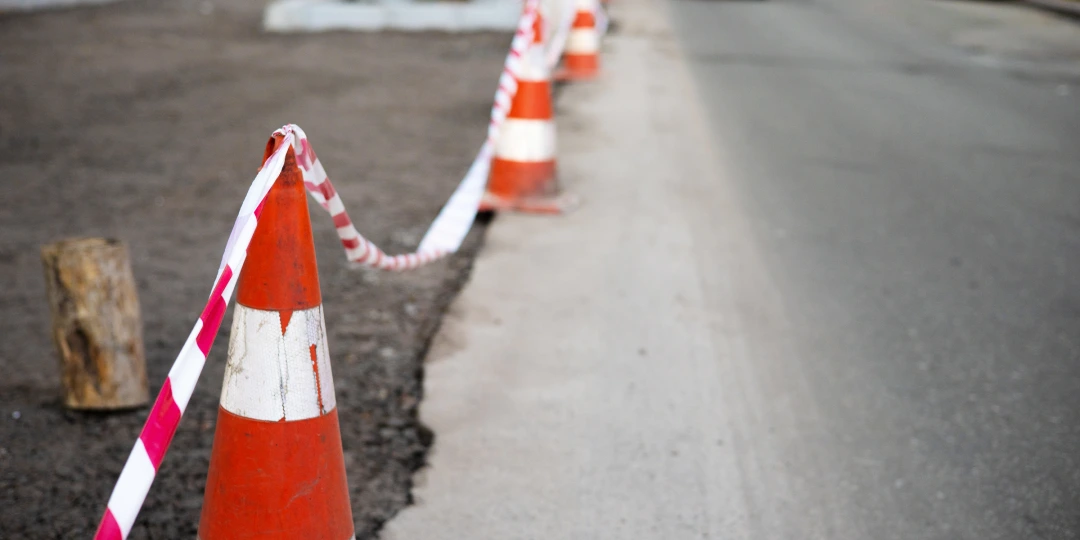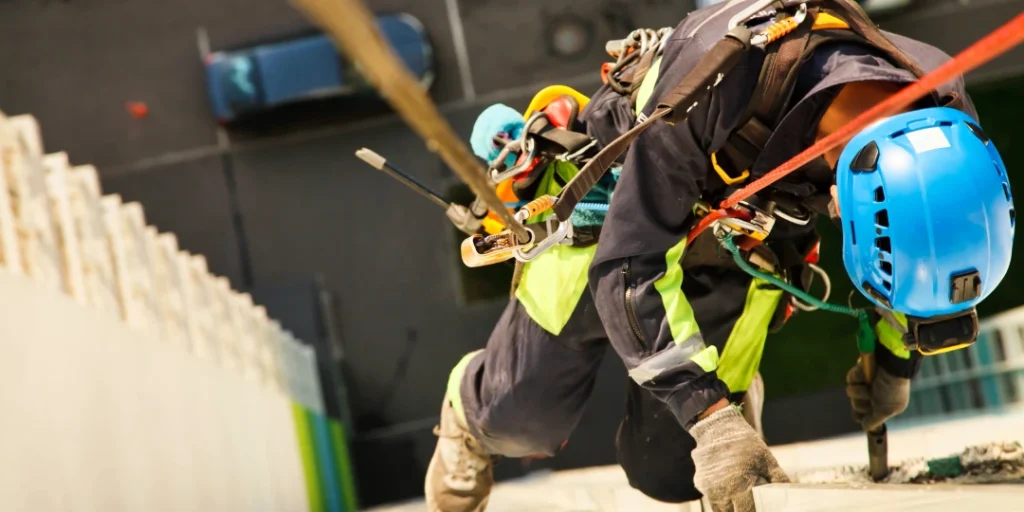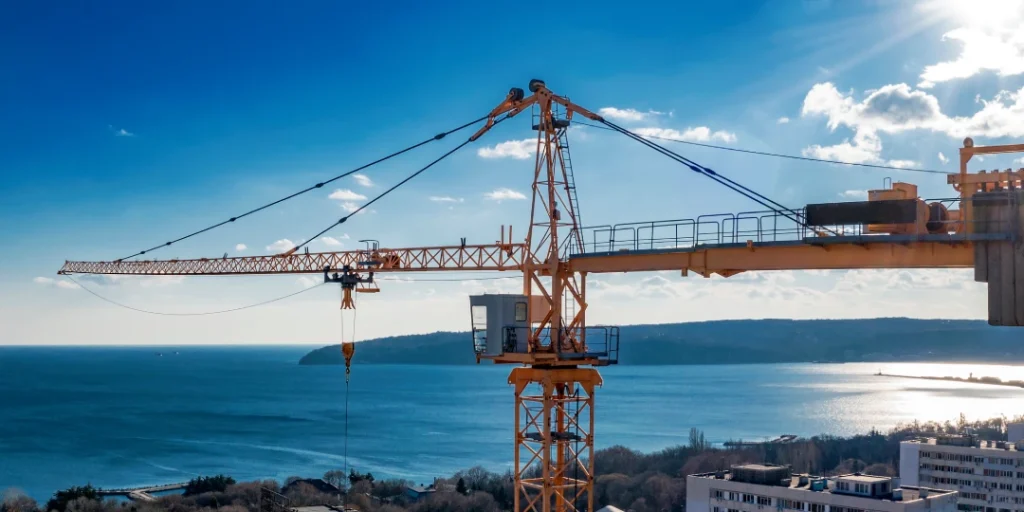Introduction
Flagging has become a central pillar of roadway safety in Nashville as the city’s infrastructure projects increase in both scale and frequency. Whether it’s a lane closure on a bustling downtown artery or a long-term development in a residential zone, the need for consistent, reliable traffic direction has never been more vital. The role of flagging in these scenarios is not just about holding signs or directing vehicles—it’s about ensuring safe passage for both workers and the public through ever-changing, often hazardous conditions.
Fortier Loss Control has emerged as a trusted name in flagging services, built on the recognition that effective traffic management requires more than just presence; it demands precision, training, and situational awareness. Flagging crews from Fortier are equipped not only with the proper tools, but with a philosophy rooted in control and clarity. Their role is as much about communication as it is about control—every wave, signal, and stance has a purpose tied to safety and flow.
In a city as dynamic as Nashville, where development can change overnight and traffic patterns fluctuate with events, construction, and peak hours, flagging is no longer a background task—it is an essential, high-stakes responsibility. Fortier’s approach blends field discipline with adaptive planning, creating an operational standard that rises above simple compliance. Their presence on a site means more than just meeting code—it signifies a culture of accountability and professionalism in motion.
A Firm Commitment to Safety Protocols
Flagging, when done correctly, is one of the most visible and immediate safeguards in a work zone. At Fortier Loss Control, safety is woven into the DNA of every flagging protocol. The company treats standardized procedures not as the finish line but the starting point. Each crew member is trained to go beyond the rulebook, internalizing safety practices so they become second nature under real-world pressure. This creates a culture where flaggers think critically and act decisively.
Part of Fortier’s success lies in how it elevates the concept of hazard anticipation. Flagging personnel are trained to read environmental cues—agitated drivers, erratic weather, blind curves—and make rapid adjustments without losing command of the site. The emphasis on preemptive action, rather than reactive fixes, sets Fortier’s flagging teams apart. Their situational awareness reduces near-misses, keeps vehicle flow steady, and preserves the physical well-being of every person near the work zone.
Vigilance is not a static quality; it must be maintained minute by minute. Fortier instills this mindset through regular on-site assessments, peer evaluations, and embedded oversight. Each flagging team is held to the highest standards, with feedback loops that ensure accountability. The outcome is a workforce that doesn’t simply carry out tasks—they uphold a shared responsibility to keep danger at bay. In every motion and every call, safety isn’t just the protocol. It’s the profession.
Comprehensive Training for Flagging Personnel
Flagging is more than positioning someone in a vest with a paddle. It requires a combination of situational intelligence, technical skill, and psychological readiness. Fortier Loss Control invests heavily in the development of its flagging personnel, ensuring that every team member is trained not just to meet minimum standards, but to surpass them. Their curriculum includes hands-on field exercises, regulatory instruction, and simulated scenarios that mimic the unpredictable nature of real-world traffic environments. This immersive approach cultivates flaggers who are alert, adaptive, and able to respond to shifting site dynamics with composure.
The training process emphasizes critical thinking just as much as compliance. Flagging personnel are taught to evaluate traffic flow, anticipate driver behavior, and adjust positioning or signals with both safety and efficiency in mind. The goal is not to train robots but skilled professionals capable of making informed decisions in seconds. Whether it’s rerouting traffic during an emergency or adjusting for unexpected equipment movement, trained flaggers must act with purpose and clarity. Fortier ensures they can do exactly that.
Beyond technical instruction, Fortier instills professional conduct. Flaggers are often the first point of contact between a construction site and the public, and their demeanor reflects on the project as a whole. Training at Fortier includes communication protocols, conflict de-escalation, and public interaction skills. These elements may not appear on a traffic control plan, but they make a substantial difference in how smoothly operations run. The result is a flagging team that’s not just capable, but composed—prepared to manage high-stress conditions with a steady hand and a clear voice.

Use of Advanced Communication Tools
Flagging relies on more than visual signals. Effective coordination between flaggers, site supervisors, and vehicle operators is key to maintaining a seamless flow of movement. Fortier Loss Control recognizes that communication lapses lead to safety risks and downtime. To address this, they integrate advanced communication tools across their flagging operations. Two-way radios, real-time digital apps, and GPS-based alerts allow field personnel to share updates instantly, react to incidents quickly, and coordinate movements with precision.
This integration of technology doesn’t replace the human element—it enhances it. When a flagging team is equipped with tools that facilitate fast, reliable communication, they can adapt to complex situations without hesitation. Whether it’s adjusting for an unexpected lane closure, rerouting delivery trucks, or coordinating with emergency responders, communication systems ensure that everyone is aligned. Delays and confusion are minimized, and the risk of error is significantly reduced.
Importantly, Fortier’s emphasis on communication extends beyond their own crews. Flagging personnel are trained to serve as communication bridges between the job site and external stakeholders—drivers, pedestrians, subcontractors, and utility services. They use their tools not just to relay instructions but to manage flow, mitigate frustration, and keep all parties informed. This layered approach transforms flagging into a dynamic operation that moves with clarity and cohesion, even under pressure.
Strategic Traffic Control Planning
Before a single cone is placed or a paddle is lifted, Fortier’s approach to flagging begins with a comprehensive traffic control plan. These plans are carefully tailored to each site’s geometry, traffic volume, time of day, and potential hazards. Flagging is treated as a strategic operation, with detailed layouts indicating flagger positioning, signage sequences, buffer zones, and escape routes. Each plan is engineered not only for regulatory compliance but for real-world practicality, drawing from extensive field experience.
These plans are living documents, not static blueprints. As site conditions evolve—due to weather, equipment movement, or project phase changes—Fortier revisits and adjusts its flagging strategy. Field supervisors conduct walk-throughs, update logistics, and communicate revisions in real time. This adaptability ensures that flagging personnel are never left improvising without support. Instead, they operate within a clearly defined framework that allows for flexibility without sacrificing control.
Effective traffic control planning also accounts for the user experience. Fortier’s flagging plans consider sightlines for drivers, stress points for pedestrians, and timing windows for delivery vehicles. The result is an experience that feels less like an inconvenience and more like a coordinated effort to keep the city moving while essential work gets done. It’s not just about controlling traffic—it’s about directing it with intelligence and foresight, qualities that distinguish Fortier’s flagging teams on every project they touch.
Adherence to Local and Federal Regulations
Flagging must operate within a strict framework of rules and standards, and Fortier Loss Control ensures those boundaries are not only respected but deeply understood. Each flagging operation is executed in full alignment with guidelines from the Manual on Uniform Traffic Control Devices (MUTCD), Tennessee Department of Transportation (TDOT), and federal OSHA requirements. This compliance isn’t a checkbox—it’s foundational. Every flagger, supervisor, and planner at Fortier is well-versed in the legal and technical mandates that govern work zones across Nashville and beyond.
Beyond baseline compliance, Fortier maintains an active relationship with regulatory updates. Their flagging teams are kept current through ongoing certification, policy briefings, and in-house audits that track adherence in the field. These updates are not reactive—they’re proactive, often incorporated into operations before mandates take effect. That vigilance ensures clients aren’t left scrambling to adjust to new standards, and job sites remain uninterrupted by compliance errors or permit violations.
Proper adherence also means protection. When a flagging team is fully compliant, contractors and municipalities benefit from reduced legal exposure and public scrutiny. Every site becomes less vulnerable to fines, shutdowns, or reputational damage. Fortier doesn’t just manage flagging teams—they serve as a regulatory buffer, giving their partners the assurance that operations are running within all required boundaries. In a climate of increasing oversight, that assurance is invaluable.

Collaborative Approach with Contractors and Municipalities
Flagging is rarely a standalone service—it’s woven into broader infrastructure efforts that demand seamless cooperation across multiple parties. Fortier Loss Control embraces this complexity by adopting a collaborative model, working hand-in-hand with contractors, engineers, and city officials to align on objectives before a flagging crew ever hits the ground. This alignment eliminates operational friction and sets the tone for an integrated, efficient work environment.
In pre-construction meetings and project walkthroughs, Fortier’s flagging team leaders contribute to site strategy by offering insight on staging, access points, peak traffic windows, and personnel deployment. Their experience often leads to adjustments that improve both safety and logistics. Rather than waiting to be told where to stand, Fortier’s flaggers are part of the conversation—active participants in shaping how the site will function day-to-day.
This spirit of collaboration continues throughout the project lifecycle. Fortier provides consistent updates, joins in conflict resolution, and adapts their flagging approach as contractor needs shift or municipal priorities change. Their crews understand they are one piece of a much larger puzzle, and they move accordingly—with flexibility, professionalism, and a focus on shared success. It’s an approach that reduces stress, improves timelines, and sets a higher standard for what flagging services can contribute.
Rapid Deployment and Responsiveness
Construction doesn’t always follow a predictable schedule. Emergencies, weather delays, and last-minute changes often require flagging teams to mobilize with very little notice. Fortier Loss Control understands that responsiveness is not a luxury—it’s a necessity. That’s why their flagging teams are built for rapid deployment, with staffing, equipment, and logistics configured to respond within hours, not days.
When called into action, Fortier crews arrive prepared. Their trucks are stocked, their gear is tested, and their chain of command is clearly defined. The goal isn’t just to show up—it’s to integrate quickly and begin directing traffic with minimal ramp-up time. Whether it’s a planned detour for a night job or an unplanned utility emergency, Fortier’s flagging operations can be underway before many competitors have even mobilized.
What truly sets their responsiveness apart is the ability to maintain quality under pressure. Fast mobilization often leads to corner-cutting, but not here. Fortier applies the same safety checks, communication protocols, and site assessments regardless of the timeline. Their rapid response does not dilute their standards. It enhances their reputation—as the company you call when flagging has to be done quickly, correctly, and without compromise.
Ongoing Evaluation and Quality Control
Flagging is a live environment, constantly shaped by moving parts and human decisions. Fortier Loss Control treats quality control as a living process—never static, never assumed. Their supervisory teams conduct regular field audits, peer reviews, and after-action evaluations to assess how each flagging operation performs in the real world. This commitment ensures that protocols aren’t just followed—they’re refined, tested, and improved in the field.
Each flagger is evaluated not only on technical accuracy but on situational judgment, communication style, and adaptability. Feedback is delivered constructively and promptly, allowing teams to make immediate adjustments when needed. This loop of evaluation isn’t punitive; it’s professional development in action. Fortier invests in every team member as a long-term asset, shaping them into leaders on the ground and reliable partners to contractors and the public alike.
At the systems level, Fortier uses incident logs, site performance metrics, and client feedback to identify broader trends and systemic improvements. Whether it’s streamlining flagger placement protocols or adjusting training modules based on observed behavior, these insights feed back into the operational core. For Fortier, quality control isn’t just about avoiding mistakes. It’s about constantly raising the standard of what flagging can and should be—predictable, professional, and protective on every front.
Community Awareness and Public Engagement
Flagging, while focused on the movement of traffic, also has a human face. The interaction between flaggers and the general public shapes how a project is perceived and how smoothly it proceeds. Fortier Loss Control understands that flagging isn’t just about redirecting cars—it’s about guiding people through disruption with patience, clarity, and respect. Their crews are trained to be approachable, informative, and alert to community concerns, acting as ambassadors for the work taking place behind them.
Public engagement starts with visibility. Fortier ensures that flagging zones are clearly marked with effective signage and consistent visual cues, reducing confusion for drivers and pedestrians alike. But they go beyond the basics. For long-term projects or high-impact closures, Fortier supports outreach efforts that include neighborhood briefings, coordination with local businesses, and digital updates. These touchpoints help residents understand what to expect and feel acknowledged in the process.
This focus on public experience makes a difference, especially in a city like Nashville where traffic frustrations can quickly escalate. Fortier’s flagging teams are trained to de-escalate tense situations and to offer clear, respectful communication when interacting with confused or impatient drivers. Their presence, tone, and professionalism all contribute to a work zone that is not only safe but well-received. Community trust is fragile—and Fortier builds it deliberately, one positive interaction at a time.

Frequently Asked Questions
1. What makes Fortier Loss Control’s flagging services different from other providers in Nashville?
Fortier stands out through its commitment to proactive safety, in-depth personnel training, and collaboration with contractors and municipalities. Unlike many providers that simply meet basic requirements, Fortier designs customized traffic control plans, uses advanced communication tools, and ensures their flaggers are professionally trained to handle real-world challenges with precision and confidence.
2. How quickly can Fortier deploy flagging teams for urgent or last-minute projects?
Fortier maintains a rapid deployment system that allows flagging crews to mobilize within hours. Their teams are equipped, briefed, and prepared to operate under tight timelines without compromising safety or quality. Whether it’s an emergency utility job or an unplanned closure, Fortier can respond efficiently while maintaining the same high standards.
3. Does Fortier engage with local communities during long-term flagging projects?
Yes. Fortier believes flagging involves public interaction, not just traffic control. For high-impact or extended projects, they support community engagement through signage, updates, and where applicable, coordination with residents or local businesses. Their flagging teams are also trained in respectful communication and de-escalation, helping to maintain public trust during disruptive work.

Conclusion
Flagging may seem like a straightforward task at first glance, but in the hands of Fortier Loss Control, it becomes a disciplined craft built on expertise, planning, and human intelligence. Their approach—shaped by a deep respect for safety, an investment in training, and a commitment to public trust—elevates the entire concept of work zone traffic management in Nashville. Every flagger they place in the field is more than a safeguard; they’re an active participant in keeping the city’s infrastructure moving forward, safely and responsibly.
By combining fast response times with rigorous protocols and modern communication tools, Fortier transforms flagging from a reactive service into a proactive operation. Their collaboration with municipal leaders, contractors, and communities builds a shared language of safety and efficiency. And through continual evaluation, they ensure that their flagging services don’t just meet expectations—they redefine them.
In a city constantly under construction, Fortier stands out as a company that doesn’t just adapt to the demands of flagging—they anticipate them. Their presence is a signal not just of traffic control, but of professional integrity, operational discipline, and a clear commitment to every life passing through a work zone.



